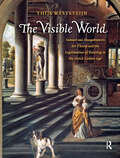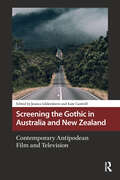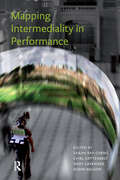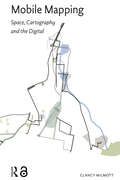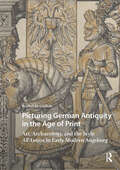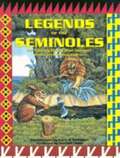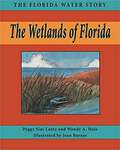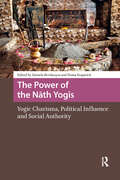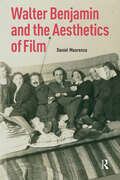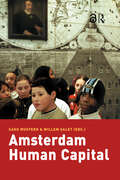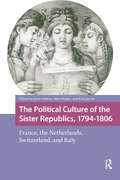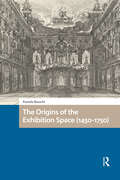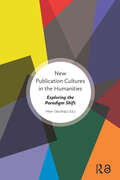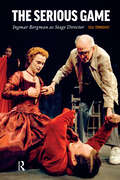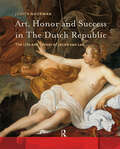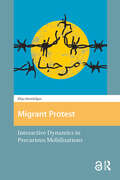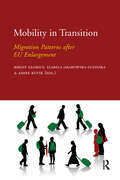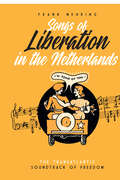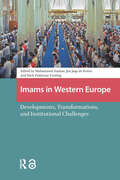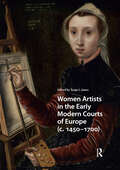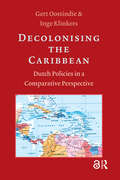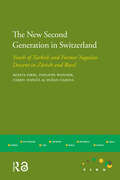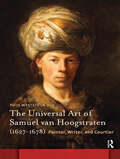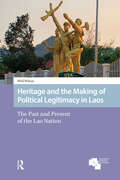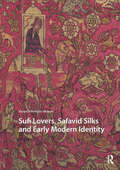- Table View
- List View
The Visible World: Samuel van Hoogstraten's Art Theory and the Legitimation of Painting in the Dutch Golden Age (Amsterdam Studies in the Dutch Golden Age)
by Thijs WeststeijnHow did painters and their public speak about art in Rembrandt’s age? This book about the writings of the painter-poet Samuel van Hoogstraten, one of Rembrandt’s pupils, examines a wide variety of themes from painting practice and theory from the Dutch Golden Age. It addresses the contested issue of ‘Dutch realism’ and its hidden symbolism, as well as Rembrandt’s concern with representing emotions in order to involve the spectator. Diverse aspects of imitation and illusion come to the fore, such as the theory behind sketchy or ‘rough’ brushwork and the active role played by the viewer’s imagination. Taking as its starting point discussions in Rembrandt’s studio, this unique study provides an ambitious overview of Dutch artists’ ideas on painting.The Visible World was awarded the Jan van Gelder Prize in 2009.“Thijs Weststeijn’s book … is destined to become one of the principal bibles for those who even remotely wish to read and understand Samuel van Hoogstraten’s thinking … written in clear, elegant language”, Jan Blanc in Simiolus 33/4 (2007-8).“By asking purposeful questions about Dutch Baroque art theory and Van Hoogstraten’s place within it, Thijs Weststeijn has provided convincing and thoughtful answers, and made a most appreciated and masterful contribution to the field.” Amy Golahny in Sehepunkte 10 (2010), nr. 6.,“[Weststeijn] shows persuasively how Van Hoogstraten’s Inleyding is rooted in the tradition of classical rhetoric and philosophy … Chapters about aspects discussed in detail in the Inleyding, such as pictorial imitation, coloring and the depiction of emotion, reveal that Van Hoogstraten’s perspective on the theory of art was an idiosyncratic one … Weststeijn supposes at various moments in his book that Samuel van Hoogstraten wanted in particular to provide a legitimation for Rembrandt’s painting practice by writing down the ideas that he must have heard in the latter’s studio.” Bram de Klerck in NRC Handelsblad, 13 February 2009.
Screening the Gothic in Australia and New Zealand: Contemporary Antipodean Film and Television (Horror and Gothic Media Cultures)
by Jessica Gildersleeve Kate CantrellThe persistent popularity of the detective narrative, new obsessions with psychological and supernatural disturbances, as well as the resurgence of older narratives of mystery or the Gothic all constitute a vast proportion of contemporary film and television productions. New ways of watching film and television have also seen a reinvigoration of this ‘most domestic of media’. But what does this ‘domesticity’ of genre and media look like ‘Down Under’ in the twenty.first century? This collection traces representations of the Gothic on both the small and large screens in Australia and New Zealand in the twenty.first century. It attends to the development and mutation of the Gothic in these post. or neo.colonial contexts, concentrating on the generic innovations of this temporal and geographical focus.
Mapping Intermediality in Performance (MediaMatters)
by Robin Nelson Sarah Bay-Cheng Andy Lavender Chiel KattenbeltThis volume examines afresh the impact upon acting and performance of digital technologies. It is concerned with how digital culture combines the traditional ‘liveness’ of theatre with media interfaces and internet protocols. The time and space of the ‘here and now’ are both challenged and adapted, just as barriers between theatre-makers and the ‘experiencers’ of events are broken down. Today many of us are everyday players performing the interconnectedness of digital culture and a key aim of the book is to unpack the multiple interrelations within the landscape of contemporary performance. Access to a range of ‘instances’ (The Builders Association, Castellucci, Castorf, Gob Squad, Lepage, Second Life and VJing) is through ‘portals’ which afford perspectives on the main characteristics of theatre and performance in the digital age.
Mobile Mapping: Space, Cartography and the Digital (MediaMatters)
by Clancy WilmottThis book argues for a theory of mobile mapping, a situated and spatial approach towards researching how everyday digital mobile media practices are bound up in global systems of knowledge and power. Drawing from literature in media studies and geography -- and the work of Michel Foucault and Doreen Massey -- it examines how geographical and historical material, social, and cultural conditions are embedded in the way in which contemporary (digital) cartographies are read, deployed, and engaged. This is explored through seventeen walking interviews in Hong Kong and Sydney, as potent discourses like cartographic reason continue to transform and weave through the world in ways that haunt mobile mapping and bring old conflicts into new media. In doing so, Mobile Mapping offers an interdisciplinary rethinking about how multiple translations of spatial knowledges between rational digital epistemologies and tacit ways of understanding space and experience might be conceptualized and researched.
Picturing German Antiquity in the Age of Print: Art, Archaeology, and the Style All’Antica in Early Modern Augsburg (Visual and Material Culture, 1300-1700)
by Rachel CarlislePicturing German Antiquity in the Age of Print: Art, Archaeology, and the Style All'antica in Early Modern Augsburg examines the central role of print to local antiquarian pursuits and generation of a style all'antica in early sixteenth-century Augsburg, Germany. Working in the shadow of Holy Roman Emperor Maximilian I, Augsburg's leading patrons, including humanist Konrad Peutinger and the mercantile Fugger family, documented local antiquities and commissioned new works of classicizing art and architecture, visually asserting a genuine, unbroken lineage to the city's past. This study challenges earlier narratives by arguing that Augsburg's artists and printers did not directly copy Italian Renaissance models but instead manipulated the imported visual vocabulary according to local concerns. The book brings together scholarly discourses on transalpine exchange, scientific advancements in printmaking, and reception of antiquity north of the Alps to offer a new understanding of art in early modern Augsburg and northern Europe at large.
Legends of the Seminoles
by Peter Gallagher Betty M Jumper Guy LaBreeLate at night around the campfires, Seminole children safely tucked into mosquito nets used to listen to the elders retelling the old stories and legends. The priceless tales of mischievous Rabbit, the Corn Lady, the Deer Girl, and the creatures of the Everglades are all written down and collected here for readers of all ages. This is a portrait of the beliefs and lifeways of the Seminoles of Florida as well as a delightful read for anyone interested in the first peoples of Florida.
Wetlands of Florida (Florida Water Story)
by Peggy Sias Lantz Wendy A HaleThis charmingly illustrated booklet explains the importance of Florida's wetlands in the water cycle and highlights the unique Everglades. It was originally published as part of The Florida Water Story in 1998. This is one of a four part children's series that includes the Oceans, the Coral Reefs and the Wetlands of Florida.Next in series > >See all of the books in this series
The Power of the Nath Yogis: Yogic Charisma, Political Influence and Social Authority (Religion and Society in Asia)
by Daniela Bevilacqua Eloisa StuparichThe volume collects a series of contributions that help reconstruct the recent history of the Nath tradition, highlighting important moments of self reinterpretation in the sampradaya’s interaction with different social milieus. The leitmotif tying together the selection of articles is the authors’ explorations of the overlap between religious authority and political power. For example, in which ways do the Naths’ hagiographical claim of possessing yogic charisma (often construed as supernatural powers, siddhis) translate into mundane expressions of socio-political power? And how does it morph into the authority to reinterpret and recreate particular traditions? The articles approach different aspects of the recent history of the Nath sampradaya, spanning from stories of yogis guiding kings in the petty principalities of the eighteenth century to gurus who sought prominence in the transnational environments of the twentieth century; examining some Nath lineages and institutions under the British Raj, in the history of Nepal, and in contemporary India.
Walter Benjamin and the Aesthetics of Film
by Daniel MourenzaWalter Benjamin is today regarded as one of the leading thinkers of the twentieth century. Often captured in pensive pose, his image is now that of a serious intellectual. But Benjamin was also a fan of the comedies of Adolphe Menjou, Mickey Mouse, and Charlie Chaplin. As an antidote to repressive civilization, he developed, through these figures, a theory of laughter. Walter Benjamin and the Aesthetics of Film is the first monograph to thoroughly analyse Benjamin’s film writings, contextualizing them within his oeuvre whilst also paying attention to the various films, actors, and directors that sparked his interest. The book situates all these writings within Benjamin’s ‘anthropological materialism’, a concept that analyses the transformations of the human sensorium through technology. Through the term ‘innervation’, Benjamin thought of film spectatorship as an empowering reception that, through a rush of energy, would form a collective body within the audience, interpenetrating a liberated technology into the distracted spectators. Benjamin’s writings on Soviet film and German cinema, Charlie Chaplin, and Mickey Mouse are analysed in relation to this posthuman constellation that Benjamin had started to dream of in the early twenties, long before he began to theorize about films.
Amsterdam Human Capital
by Sako Musterd Willem SaletThe familiar shape of western cities is changing dramatically. For long times the urban core was taken for granted as the focal point for international contacts and day-to-day activities in the region. Currently, the urban scope is transforming into multi centred forms at metropolitan scale. The transition is not just a matter of spatial form, it is reflecting social, economic and cultural processes. The question is what new identities may develop in such changing historical conditions of space and place.This book is a first attempt to analyse the process of urban transformation in an integral way. The focus is on the region of Amsterdam. All contributions are written by senior researchers of the Amsterdam studycentre for the Metropolitan Environment (AME). AME is the interdisciplinary urban research institute of the Universiteit van Amsterdam.As the urban research institute at the Universiteit van Amsterdam, the Amsterdam studycentre for the Metropolitan Environment (AME) analyses the economic, social and cultural aspects of this spatial transformation, usually in international comparative research. All contributions to this book are written by senior researchers of AME in an attempt to analyse in an integral way the present and future dilemmas out of the historical growth paths of this dynamic city.
The Political Culture of the Sister Republics, 1794-1806: France, the Netherlands, Switzerland, and Italy (Intellectual and Political History)
by Joris Oddens Mart Rutjes Erik JacobsLeading historians of the French, Batavian, Helvetic, Cisalpine and Neapolitan revolutions bridge the gap between the historiographies of the so-called 'Sister' Republics. They explore political culture as a set of discourses or political practices. Parliamentary practices, the comparability of 'universal' political concepts, late-eighteenth century Republicanism, the relationship between press and politics, and the interaction between the Sister Republics and France are studied from a comparative, transnational perspective.
The Origins of the Exhibition Space (Spatial Imageries in Historical Perspective)
by Pamela BianchiBefore the first purpose-designed exhibition spaces and painting exhibitions emerged, showing art was mainly related to the habit of dressing up spaces for political commemorations, religious festivals, and marketing strategies. Palaces, cloisters, façades, squares, and shops became temporary and privileged venues for art display, where sociability was performed, and the idea of exhibition developed. What were those places and events? What aesthetic, cultural, social and political discourses intersected with the early idea of exhibition space? How did displaying art shape a new vocabulary within these events, and conversely, how have these occasions conditioned exhibiting practices? This book traces the origins of the exhibition space by studying its visual and written imagery in the early modern period. It reconsiders events and habits that contributed to shaping the imagery of the exhibition space, and to defining exhibition-making practices, exploring micro-histories and long-term changes.
New Publication Cultures in the Humanities: Exploring the Paradigm Shift
by Péter DávidháziThe changes we have seen in recent years in the scholarly publishing world - including the growth of digital publishing and changes to the role and strategies of publishers and libraries alike - represent the most dramatic paradigm shift in scholarly communications in centuries. This volume brings together leading scholars from across the humanities to explore that transformation and consider the challenges and opportunities it brings.
The Serious Game: Ingmar Bergman as Stage Director
by Egil TörnqvistThough Ingmar Bergman became famous as a filmmaker, his roots-and, to some extent, his heart-were in the theater. He directed more than one hundred plays in his career, and The Serious Game takes a close look at fourteen productions he staged at the Royal Dramatic Theatre in Stockholm. Looking closely at the relationship between the verbal and the visual, this book gives even longtime Bergman fans a new understanding of his sensitivity to nuance, his versatility, and his dedication to craftsmanship.
Art, Honor and Success in The Dutch Republic: The Life and Career of Jacob van Loo (Amsterdam Studies in the Dutch Golden Age)
by Judith NoormanFocusing on the interrelationship between Jacob van Loo's art, honor, and career, this book argues that Van Loo's lifelong success and unblemished reputation were by no means incompatible, as art historians have long assumed, with his specialization in painting nudes and his conviction for manslaughter. Van Loo's iconographic specialty - the nude - allowed his clientele to present themselves as judges of beauty and display their mastery of decorum, while his portraiture perfectly expressed his clients' social and political ambitions. Van Loo's honor explains why his success lasted a lifetime, whereas that of Rembrandt, Frans Hals, and Vermeer did not. Taking an interdisciplinary approach, this book reinterprets the manslaughter case as a sign that Van Loo's elite patrons recognized him as a gentleman and highly-esteemed artist. Uniquely, this book: - redefines Van Loo's place within, and contribution to, the Golden Age of Dutch painting, consistently discussing Van Loo in relation to his contemporaries; - demonstrates that honor was a precondition for artistic success; - allows new insight into the relation between honor, artistic success and socially acceptable behavior, particularly of artists in the Dutch Golden Age.
Migrant Protest: Interactive Dynamics in Precarious Mobilizations (Protest and Social Movements)
by Elias SteinhilperMigrant protest has proliferated worldwide in the last two decades, explicitly posing questions of identity, rights, and equality in a globalized world. Nonetheless, such mobilizations are often considered anomalies in social movement studies, and political sociology more broadly, due to weak interests and a particularly disadvantageous position of outsiders to claim rights connected to citizenship. In an attempt to address this seeming paradox, Migrant Protest: Interactive Dynamics in Precarious Mobilizations explores the interactions and spaces shaping the emergence, trajectory, and fragmentation of migrant protest in unfavorable contexts of marginalization. Such a perspective unveils both the odds of precarious mobilizations and the ways they can be temporarily overcome. While adopting the encompassing terminology of migrant, this book focuses on precarious migrants, including both asylum seekers and illegalized migrants.
Mobility in Transition: Migration Patterns after EU Enlargement (IMISCOE Research)
by Izabela Grabowska-Lusinska Aimee KuvikThis volume presents new research on post-accession migration from Central and Eastern Europe in the short period since the EU enlargements of 2004 and 2007. Explanations of post-accession migration patterns, trends and mechanisms delve into the complexities of these phenomena. New groups of migrants and types of migrations are identified -- such as young migrants, often students or graduates, without family obligations and without clear plans concerning their future life. Case studies on Poland, Romania, Hungary and Latvia as well as the United Kingdom and Germany – being major destination countries – divulge the multifaceted nature of transition, whether in the form of labour migration, short-term mobility (including among international students) or return migration. The volume insightfully points towards future migration trends and sets guidelines for further research.
Songs of Liberation in the Netherlands: The Transatlantic Soundtrack of Freedom
by Hugo JanWhen the Allied Forces arrived in the Netherlands after Operation Market Garden, the country's long-awaited liberation from National Socialist occupation finally came in the summer of 1945. With freedom reclaimed, a wave of joy and hope swept through the nation, finding its most powerful expression in the stirring liberation songs that resonated across the land. These songs, an evocative transatlantic soundtrack of freedom, captured the spirit of the time through music, lyrics, and dance, celebrating the euphoria of a nation reborn. Songs of Liberation in the Netherlands: The Transatlantic Soundtrack of Freedom invites readers on an extraordinary journey into this transformative period. Frank Mehring, along with an international team of writers, musicians, and curators, brings to life the vibrant music that accompanied liberation by drawing from the remarkable Hugo Keesing collection at the Freedom Museum in Groesbeek, featuring over 300 rare sheet songs. Now rediscovered, these songs offer a profound connection to the past, inviting us to reimagine the emotional power of music in shaping cultural memory.
Imams in Western Europe: Developments, Transformations, and Institutional Challenges
by de Ruiter, Jan JaapAs European Muslims and Muslims in the Middle East diverge, imams in Europe have emerged as major agents of religious authority who shape Islam’s presence in Western societies. This volume examines the theoretical and practical questions concerning the evolving role of imams in Europe. To what extent do imams act as intermediaries between European states and Muslim communities? Do states subsidise imam training? How does institutionalisation of Islam differ between European states?
Women Artists in the Early Modern Courts of Europe: c. 1450-1700 (Visual and Material Culture, 1300-1700)
by Tanja L. JonesWomen Artists in the Early Modern Courts of Europe, c. 1450.1700 presents the first collection of essays dedicated to women as producers of visual and material culture in the Early Modern European courts, offering fresh insights into the careers of, among others, Caterina van Hemessen, Sofonisba Anguissola, Luisa Roldán, and Diana Mantuana. Also considered are groups of female makers, such as ladies-in-waiting at the seventeenth-century Medici court. Chapters address works by women who occupied a range of social and economic positions within and around the courts and across media, including paintings, sculpture, prints, and textiles. Both individually and collectively, the texts deepen understanding of the individual artists and courts highlighted and, more broadly, consider the variety of experiences of female makers across traditional geographic and chronological distinctions. The book is also accompanied by the Global Makers: Women Artists in the Early Modern Courts digital humanities project (www.globalmakers.ua.edu), extending and expanding the work begun here.
Decolonising the Caribbean: Dutch Policies in a Comparative Perspective
by Gert Oostindie Inge KlinkersMuch has been written on the post-war decolonisation in the Caribbean, but rarely from a truly comparative perspective, and seldom with serious attention to the former Dutch colonies of Surinam, the Netherlands Antilles and Aruba. This study bridges both gaps. In their analysis of Dutch decolonisation policies since the 1940s, the authors discuss not only political processes, but also development aid, the Dutch Caribbean exodus to the metropolis and cultural antagonisms. A balance is drawn both of the costs and benefits of independence in the Caribbean and of the outlines and results of the policies pursued in the non-sovereign Caribbean by France, the Netherlands, the United Kingdom and the United States.
The New Second Generation in Switzerland: Youth of Turkish and Former Yugoslav Descent in Zurich and Basel (IMISCOE Research)
by Philippe Wanner Rosita Fibbi Ceren Topgül Dušan UgrinaUsing data from the Integration of the Second Generation in Europe survey, this timely study focuses on the second generation of immigrants from Turkey and former Yugoslavia in Switzerland. A common thread running through the various chapters is a comparison with previous research on Switzerland concerning the second generation of Italian and Spanish origin. The authors provide valuable insights into the current situation of the children of Turkish and Yugoslav immigrants while underlining the historical similarities and differences of their respective incorporation processes.
The Universal Art of Samuel van Hoogstraten: Painter, Writer, and Courtier (Amsterdam Studies in the Dutch Golden Age)
by Thijs WeststeijnSamuel van Hoogstraten was not only one of Rembrandt’s most succesful pupils and a versatile painter. His experiments in optical illusion also attracted the interest of the natural scientists of his time. Furthermore, he wrote some of the first Dutch novels, plays, and a treatise on painting. After travelling to Rome, Vienna, and London he introduced European courtiers’ manners in the Low Countries. In this book, a collective of specialists with different backgrounds sheds light on the facets of Van Hoogstraten’s work that demonstrates in a unique manner how art, literature, and science were interrelated in the Dutch Golden Age. The contributors devote special attention to his theory of art and his literary writings, the role of paintings in his social network, his contacts in Italy and Britain, and finally the art of his master, Rembrandt. Bringing to the fore hitherto unknown works and highlighting new connections between word and image, the book is an important contribution to our understanding of Van Hoogstraten’s universal art and its implications for Early Modern cultural history.
Heritage and the Making of Political Legitimacy in Laos: The Past and Present of the Lao Nation (Asian Heritages)
by Phill WilcoxThe Lao People’s Democratic Republic is nearly fifty years old, and one of the few surviving one-party socialist states. Nearly five decades on from its revolutionary birth, the Lao population continues to build futures in and around a political landscape that maintains socialist rhetoric on the one hand and capitalist economics on the other. Contemporary Lao politics is marked by the use of cultural heritage as a source of political legitimacy. Researched through long-term detailed ethnography in the former royal capital of Luang Prabang, itself a UNESCO-recognized World Heritage Site since 1995, this book takes a fresh look at issues of legitimacy, heritage, and national identity for different members of the Lao population. It argues that the political system has become sufficiently embedded to avoid imminent risk of collapse but suggests that it is facing new challenges primarily in the form of rising Chinese influence in Laos.
Sufi Lovers, Safavid Silks and Early Modern Identity (Visual and Material Culture, 1300-1700)
by Nazanin Hedayat MunroeThis book examines a group of sixteenth- and seventeenth-century figural silks depicting legendary lovers from the Khamsa (Quintet) of epic Persian poetry. Codified by Nizami Ganjavi in the twelfth century, the Khamsa gained popularity in the Persian-speaking realm through illustrated manuscripts produced for the elite, creating a template for illustrating climactic scenes in the love stories of “Layla and Majnun” and “Khusrau and Shirin” that appear on early modern silks. Attributed to Safavid Iran, the publication proposes that dress fashioned from these silks represented Sufi ideals based on the characters. Migration of weavers between Safavid and Mughal courts resulted in producing goods for a sophisticated and educated elite, demonstrating shared cultural values and potential reattribution. Through an examination of primary source materials, literary analysis of the original text, and close iconographical study of figural designs, the study presents original cross-disciplinary arguments about patronage, provenance, and the socio-cultural significance of wearing these silks.
